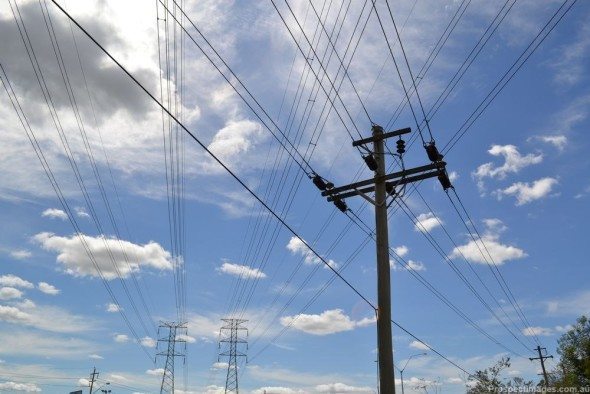

In the rapid shift to renewables on Australia’s grid, there has been a good deal of focus on what can be done in the wholesale electricity market to harness the power of demand response.
That is, what can be done by rule makers and market operators to allow big energy users to to reduce their load when spot market prices go sky high, and be compensated for the service.
But what about at the retail level?
As Mark Byrne and Craig Memery wrote here last month, there’s not a whole lot being done in demand response at a household and small commercial level in Australia as yet, partly because big retailers who have their own power plants stand to lose from reduced demand.
But gradually new players are emerging in the retail space with nothing to lose, and plenty to gain, from enabling their customers to participate in demand response.
Amber Electric is one of those and, after a January heatwave earlier this summer, took to Twitter to explain exactly how using demand response at a retail level can be a win-win, for customers and for the grid.
As Amber CEO and founder Chris Thompson details in the series of fascinating tweets below, one customer used the retailer’s demand response model to earn $150 during the high price event.
Wanted to share some stories about what went down for amber customers with wholesale prices during the wild price spikes on Jan 24th.
Will have to stay a little vague as we are still small and I don’t want to accidentally share any potentially identifying information /thread
— Chris from amber electric (@chrisfromamber) February 4, 2019

 But that was one savvy customer, on one scorching hot South Australian day. One Step Off The Grid spoke to Amber Electric founder and CEO Chris Thompson how the company works from day to day, and what it’s hoping to achieve.
But that was one savvy customer, on one scorching hot South Australian day. One Step Off The Grid spoke to Amber Electric founder and CEO Chris Thompson how the company works from day to day, and what it’s hoping to achieve.
“It’s a pretty transparent model,” Thompson said. “Our goal is to save (customers) more money by offering them the opportunity to buy the cheapest possible rates.
“To do this we offer our wholesale prices to customers, and we help them use more power at cheap times, and less power at expensive times.
“Cheaper times are when wind is blowing and sun is shining.
“And at (high priced) spike events (such as during the SA heatwave event outlined above) we allow them to either use less or export more of their solar.”
But can’t that work the other way – say if they have to do a load of washing during a peak event?
“To offer protection for these kind of events we cap it at the average price, so in South Australia that is 40c/kWh. That ensures nobody ends up worse off.
“And we operate on a flat $10 a month fee, which means we don’t profit from customers usage or exports, which means we don’t have a financial incentive either way.
“This means we’re cheaper than pretty much everyone almost all the time.”
What do customers look to get out of signing up with Amber?
“Providing the option to see what’s going on in the grid, the opportunity to step in and use less, has really resonated with our customer base.
“It enables customers to do the right thing by the environment, by the grid and to save money.
Is it catching on?
“Certainly, we believe the future of electricity providers is not the traditional way where the consumer has to take the price they’re given and have to shop around every two or three years and discover they’re being screwed again.
“We’re just still a small company (operating in Sydney and South Australia only, so far, with plans for Victoria) and we need to get better and better and work with customers to help improve service.”
So what are the barriers for Amber?
“We don’t have too many barriers.
“We have partnered with Victoria-based licenced retail provider Energy Locals, so through the wholesale pricing model (we use), that operates today and doesn’t require any changes to regulations.
“But the bigger picture does need changes. At the megawatt-level, if we used market repose to get through peak events, it would be quite easy to get through peak events.
“And demand response can work well every day, not just in times of peak demand.”
How does consumer thinking need to change, and be changed, to embrace demand response?
“Solar electricity is by far the cheapest form of electricity. So we need to encourage people to use more of it. It’s cheaper for everyone, and greener for everyone.
“Beyond solar, can we actually try and give people the opportunity to shift their load. Pool pumps, electric cars, etc, can all be run painlessly and seamlessly during the day, increasing the usage of renewable energy, decreasing reliance on coal and gas, and saving them money at the same time.”

Sophie is editor of One Step Off The Grid and editor of its sister site, Renew Economy. Sophie has been writing about clean energy for more than a decade.
